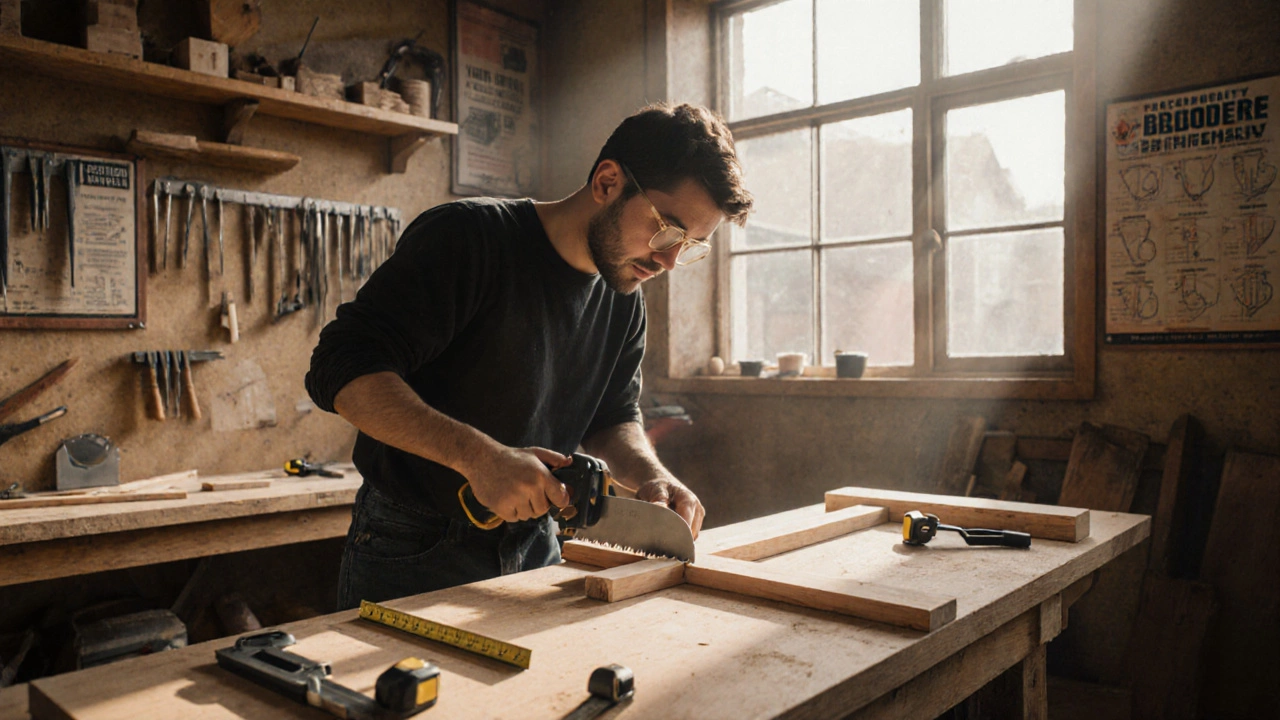Beginner Carpentry: What You Need to Start and How to Get Better Fast
When you're starting out in beginner carpentry, the practical skill of cutting, shaping, and assembling wood to build structures or furniture. Also known as woodworking, it's not about having perfect hands—it's about learning how to use tools safely and think like a builder. Many people think you need to be born with a knack for it, but that’s not true. The best carpenters didn’t start as experts. They started with a saw, a measuring tape, and the willingness to make mistakes and fix them.
What you really need to know as a beginner isn’t a long list of techniques—it’s the basics: how to measure twice and cut once, how to read a tape measure in fractions, and how to drive a nail without bending it. carpentry math, the practical use of fractions, angles, and simple geometry to ensure pieces fit together shows up in every project, from building a shelf to framing a wall. You don’t need calculus. You need to understand that 3/4 inch plus 1/2 inch equals 1 1/4 inches—and that a 45-degree angle cuts a corner cleanly. carpentry tools, the essential equipment like hammer, square, level, saw, and drill that turn raw wood into finished work matter more than brand names. A good claw hammer and a reliable combination square will get you further than a full toolbox of cheap gear.
And if you’re thinking about turning this into a career, NVQ carpentry, a UK-recognized qualification that proves you can do real work on the job, not just pass a written test is the path most employers look for. It’s not about sitting in a classroom. It’s about showing up, doing the job, and having someone watch you do it right—over and over. That’s how you earn trust, and that’s how you earn a wage.
You’ll find posts here that clear up myths—like whether you need a degree to be a carpenter, or if you can learn it all on your own. You’ll see how much math you actually use, what tools you can skip when you’re starting, and how people go from building a birdhouse to getting paid for real projects. There’s no magic trick. Just steady practice, the right mindset, and knowing what to focus on next. The work is out there. You just need to start.




